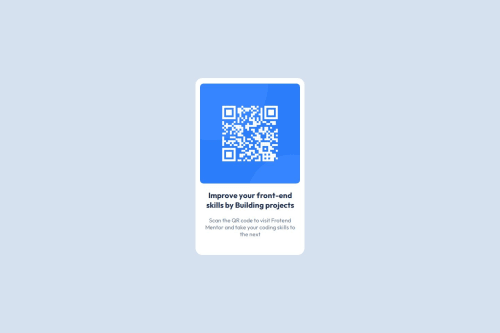
Solution retrospective
I am proud that I was able to create a responsive and visually appealing layout for the QR Code component, using semantic HTML and CSS effectively. I also appreciated the opportunity to apply flexbox techniques to center the elements.
What challenges did you encounter, and how did you overcome them?I tried to make it as similar as possible.
What specific areas of your project would you like help with?I would like help with the footer, as I was unable to add it without it interfering with the width of the QR Code. The layout is out of alignment, and I need guidance on how to include the footer without compromising the presentation of the component.
Please log in to post a comment
Log in with GitHubCommunity feedback
No feedback yet. Be the first to give feedback on Emilly Moitinho's solution.
Join our Discord community
Join thousands of Frontend Mentor community members taking the challenges, sharing resources, helping each other, and chatting about all things front-end!
Join our Discord